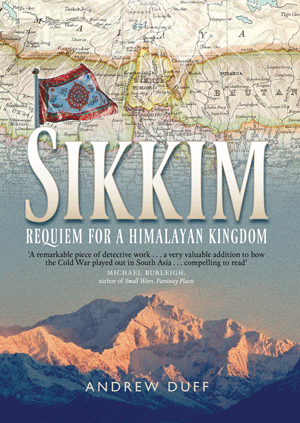Q: How many Xinhua News Agency reporters does it take to change a light bulb?
A: Three – one to publicly denounce everyone who saw the light bulb go out, one to delete any information pointing to the fact that the light bulb went out, and one to issue a statement saying the light bulb was never there in the first place.
Despite protestations from the Chinese that they are opening up their media, I don’t doubt that there is still a grain of truth in the joke above, which I got from Hong Kong’s HK Magazine after the trouble in Xinjiang. (Here’s a fantastic FT article about the Chinese policing of the Internet if you’re interested.)
Outside the cyberworld too, China wasn’t the easiest place to travel in. In particular, entering via Tibet and then Xinjiang gave a very particular viewpoint on the project for a new China. The rationale for the Han Chinese presence in both places is as much economic as political – waterheads in Tibet, and mineral resources in Xinjiang – and it’s true that in return there has been at least some economic benefit for the people. But the treatment of the local population by the authorities that I saw in both places (outright physical violence in Tibet, a threatening wariness in Xinjiang while I was there) stuck in the gullet.
But these things aren’t simple – as one provocative article pointed out in the self-same HK magazine, everything is relative – even if you look at China as an occupying imperial power in these territories, their record is probably a lot more palatable than that of the British in India, the French in Indochina, or the Belgians in Africa.
Ultimately of course, all this occurs in an environment where, as the joke suggests, the whole concept of truth takes on a very different meaning. Closing down Blogger earlier this year was a retrograde step (am I really that dangerous?), and ludicrously easy to get round. I just sent my posts via email to a friend in London and he posted them from there. How long China can on the one hand continue with its attempts at control of the media while on the other opening up to the world is an increasingly moot point.
Despite all that, China grew on me. It is a fascinating (if slightly puzzling) place, and I was privileged to see it in 2009 – a number of ordinary people told me that they felt the pace of change had substantially quickened this year. And how’s this for a stunning statistic – China holds roughly the same number of people as the whole of the Americas (North and South). Yet North and South America have over 50 national governments and 4 major languages; China has errr…. one of each.
So what is the real China?
“China-lite”?
I spent my last full day in China in a place called Dali, the town below the Kung Fu monastery. My guidebook dubbed it “China-lite” which is a pretty fair analysis – many travellers love it for it’s easy going feel, but in reality it’s more sanitised than a bottle of Extra-strong Dettol.
However, as I sat having a last coffee, I realised that this town is as good a lensas any through which to view China’s past, present, and future.
The tourists are coming…
In Dali, I befriended a taxi-driver called Michael (Chinese name Lee Ming). Business is booming for Michael with plenty of pick-ups from the airport 35 km away, a rail station 10 kilometres away, and expressway roads cutting a swathe through the countryside to take Chinese and Western tourists up the side of the beautiful Er Hai lake..
His eyes widened as I asked him about the pace of change – it’s all very different from 10 years ago when he first came to Dali – the railway wasn’t built, the airport wasn’t even under consideration, and the roads outside the city were dirt tracks. Horse-drawn carts were common in the town. In 2000 there were 6 hotels – named Hotel Number 1, Hotel Number 2, etc; now there are hundreds of hostels, guesthouses, even boutique hotels catering for an increasingly well-heeled Chinese crowd.
Internal tourism is the big boom business in China – the emerging middle class taking advantage of a massive transport infrastructure push to experience places in this vast country that until recently were hardly even accessible. Backpacking among Chinese youth is taking off too.
Michael’s eyes narrowed, however, as I asked him what would happen in the next 10 years. “We have problems, many problems. I have moved out of town. Pollution very bad for my daughter. And is very crowded. Many many tourists…”
The new accessibility is also accompanied by what is perhaps the most bizarre aspect of China – the wholesale re-creation of the country’s past after years of neglect. All over the country, Pagodas, Temples and other tourist sites are being restored, rebuilt (in some cases even built from scratch). And in nearly every case, they are smothered by concrete walkways, huge (currently empty) parking lots, and awful shopping malls complete with pushy touts.
I found this sad, but in reality I don’t matter (and anyway, how different is it really from Aviemore…). For the Chinese tourists, being able to experience their history afresh is reward enough. That’s the market that counts – and the infrastructure is being built at a dizzying pace. As long as the economy is stable, the internal tourism market will be a major feature of how this country appears to Western eyes in 10 years time.
Look at me, I’m ethnic
In Dali it’s not unusual to see women, dressed in pristine outfits of the local Bai ethnic community, guiding middle-aged Western couples through the streets. But there’s a problem with this picture. Most of them aren’t Bai at all – they’re mainstream Han Chinese dressed up to look like Bai people.
(In a wonderful twist of irony, if you hang around long enough in Dali you will meet real Bai women in genuine, and less pristine, local dress – they’re the ones whispering “Ganja? You want weed?” to every passing traveller in an effort to earn a crust).
Ethnicity is a fascinating issue in China. In 1989, after spending 40 years assiduously erasing the hard drive of the nation, the government realised that some form of recognition of the ethnic diversity inherent in a nation of this size was necessary – in fact, essential. As a result, there is now a kind of forced “celebration” of ethnic people in the provinces, which leads to bizarre contrasts like the one above.
One researcher that I met pointed out that the result of all this top-down Ethnic pushing and pulling is that the people just go with the flow…in a display of “economic subjectivity”, most Chinese residents in Yunnan for instance will happily switch between Bai and Han ethnic identities dependent on what brings most economic benefit. Hmmmm… we’re all globalised now….
There is, however, one big elephant in the room. One of the surprises of my journey though China was the prevalence of Islam – there are 200 million Muslims living here. Where religion gets involved, ethnicity becomes a less malleable issue, as recent events in Xinjiang show. The attempts to be more open in reporting those disturbances show that, when it comes to religious ethnicity, the authorities realise they will have to tread a fine line between managing diversity and promoting homogeneity. A big issue.
Cultural baggage? What cultural baggage?
In Shanghai, I asked a businessman I had been introduced to the archetypal impossible question – how do I get to know China better? The answer was one that I‘d hear versions of before – “If you want to really know the Chinese character, you must understand three concepts well – Taoism, Confucianism, and Buddhism. Then learn China’s 20th century history and you’ll understand where we are today.” I spent a good few weeks thinking this was the final word.
But while Lao Tzu, Buddha and Confucius do provide some context (and are certainly still important for an ageing population), I’m not so sure that the youth of China give a toss about the old boys; and they‘re fast catching on to the idea of Mao as a pop-cultural icon rather than an inspiring sage.
Computer games, booze and other intoxicants, and (above all) money seem pretty important too. I wrote about the computer-game addiction before – and the sight of a group of Chinese teenagers carrying one of their slobbering-drunk friends along the street in Dali may still be rare up there in Yunnan province, but it’s increasingly common in the cities. More Confuse-us than Confucius. China-lite? Hmmmm…
So I wonder if, more than anything else, it might actually be the lack of cultural baggage that will mark China out in the 21st century. After a 200 year blip, during which the world could easily categorise China (first as a colonial outpost, then as a communist ogre), the Middle Kingdom is back, and this time it’s engaging with the world. Money can be made by anyone, sanitised urban environments can be created, the past can be re-presented at will. (It’s kind of like someone saying “Categorise that!”)
In the tradition of all interesting change in the world, it is, of course, one massive economic and political experiment – probably the biggest in history. One things for sure – in Chinese terms (think centuries, not decades), the ball will keep rolling one way or another, even if things crash in the short term as this article suggests.
It’s my blog and I’ll pontificate if I want to
Right, so that’s that off my chest. The wonderful thing about a blog is that you can write what you want (although I realise that the above is probably stretching a point, and may well fail the “entertain-me” test). I suspect, however, that no-one has got this far, so it won’t matter much anyway.
I am currently recovering in Laos before heading to a beach in Thailand for a few days, and then off to Malaysia for a date with some Turtles that need help breeding.
Toodle-pip!




